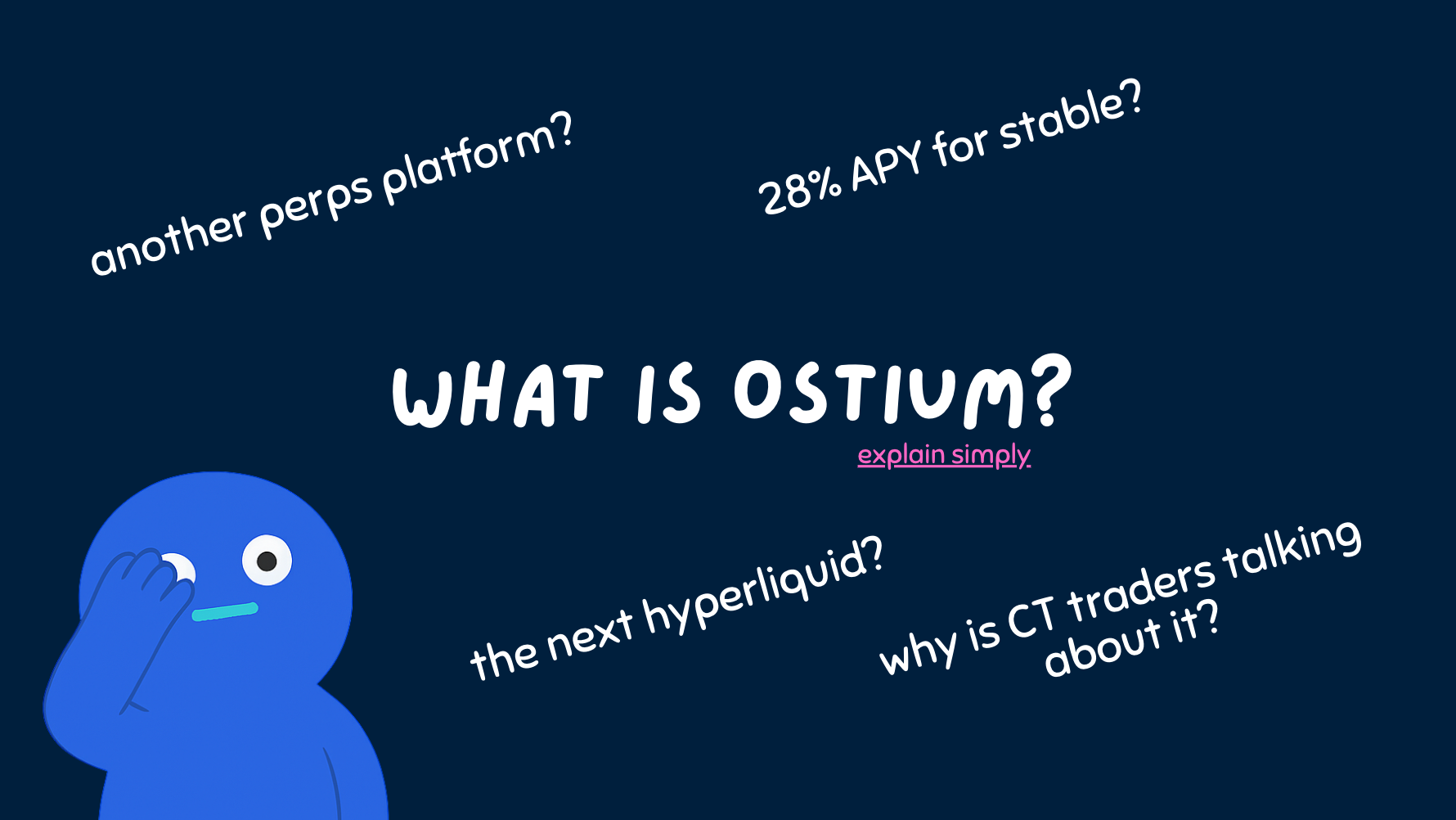Mantra Token's 90% Crash Shows the Inherent Risk Side of Cryptos



A cryptocurrency initiative named Mantra, claiming to be a blockchain facilitating the exchange of "real-world assets," experienced a staggering 90% decline in the value of its token OM within just a few hours last week , resulting in a loss exceeding $5 billion.
While traders continue to analyze the factors behind the token's drop to 50 cents, those with experience in the cryptocurrency sector recognize that the design of OM's token raised significant concerns.
https://t.co/x8iVYz6Gm1
— Mosi (@VannaCharmer) March 24, 2025
Various research efforts have categorized OM within the "low circulation, high FDV," or fully diluted value segment.
This is due to findings from a study indicating that the project team held a significant portion of the OM tokens in their wallet prior to the price decline.
John Patrick Mullin, co-founder and current CEO of Mantra, refuted that claim.
Haha fudders aren’t even trying to do research these days… they literally found the mirror bucket wallet that holds mainnet coins (that are 1 for 1 with the ERC supply) that get fed into the bridge and release when ERC tokens are burnt, and are claiming we’re manipulating… https://t.co/0ns7bALXz5
— JP Mullin (?, ?️) (@jp_mullin888) March 21, 2025
According to data from DeFiLlama, a mere $3.2 million in cryptocurrency has been transferred to the Mantra blockchain despite the OM token being fully diluted and currently valued at $1 billion.
The computations of FDV are, naturally, a topic of discussion.
Under the assumption that all tokens will eventually be in circulation and that their prices will reflect the current market value, the calculation is straightforward. It equals the current price multiplied by the total number of tokens anticipated to circulate in the future.
Mantra $OM Welcome to crypto! Why did this happen? https://t.co/Y9j6qphMwh pic.twitter.com/5rPKQnZh04
— EXCAVO (@EXCAVO) April 14, 2025
Views on concentrated ownership could influence the token's fragile market structure, making it highly vulnerable to selling pressure.
Investors seemingly overlooked the warning signs leading up to the crisis, as the price of OM kept climbing throughout the previous year, reaching a peak of $9 in February, according to CoinGecko.
A Vicious Cycle
The dangers associated with centralized capital-market operations, as evidenced by the Mantra crisis, become especially pronounced in situations of low liquidity.
The unfolding events are not surprising anymore.
The rising prominence of accounts such as @0xBalloonLover and @VannaCharmer, known for their critical stance on crypto projects, indicates that traders in the cryptocurrency space are enhancing their scrutiny and proactively informing the public about possible issues following a tumultuous 2022.
Nevertheless, it is common for investors to trade coins impulsively during periods of increasing values, often unaware of the associated risks.
Once the market declines, individuals will start sharing X tweets highlighting the negative impact of these initiatives on cryptocurrency—until there is an upward trend in prices, that is. Everything is interrelated.
The narrative of Mantra lacks originality. When FTX used its FTT token as collateral for loans, similar situations emerged.
This time, a substantial loan backed by a specialized coin called CRV is poised to disrupt the lending sector within decentralized finance.
A few weeks ago, an incident occurred that led Hyperliquid to make a controversial governance decision following reports of a trader manipulating an illiquid token on the exchange.
Previously, the attention was drawn to Hyperliquid, the largest decentralized derivatives exchange by trading volume, due to an incident that starkly contrasted with its decentralized nature.
A trader, whose identity remains undisclosed, artificially raised the price of JELLY, a memecoin based on Solana, by acquiring tokens across multiple platforms. Subsequently, they established a short position on Hyperliquid, amounting to nearly $4.8 million in perpetual swaps linked to the currency.
Gauntlet, specializing in crypto risk management, reports that the trader's short position was assumed by the project's Hyperliquid Provider (HLP) Vault following the trader's withdrawal of collateral as the token's price increased. This initiated a liquidation process.
https://t.co/5e3RkW8VRg
— Gauntlet (@gauntlet_xyz) March 28, 2025
The news that Binance and OKX exchanges would start offering permanent swaps for the token led to a significant increase in JELLY's price, driven by continued buying from traders.
Gauntlet reports that the short position has resulted in over $10 million in unrealized losses for the HLP Vault.
Centralized intervention effectively mitigated further losses: Following a vote by the platform's validators—individuals operating software to verify transactions and safeguard the network—the perpetual swaps of JELLY were delisted, and all positions were forcibly closed at a predetermined price of $0.037555.
Some participants in the market expressed concerns that this decision demonstrated a lack of decentralization, given Hyperliquid's limited number of validators, which stands at only 16.
The fact that HLP managed to achieve profitability rather than incurring a loss exceeding $10 million has led to speculation about whether the Hyperliquid team had a particular inclination towards the HLP Vault in determining the closing price.
These events are the latest evidence that some aspects of the crypto landscape remain constant.
https://t.co/ip0GQWE69W
— Kam ? (@KamBenbrik) January 7, 2025
Despite the collapse of the FTX exchange and the algorithmic stablecoin TerraUSD three years ago, the cryptocurrency market remains a platform for risky ventures.
Delisting and settling the positions makes sense. What price to use for the forced settlement is arguable.
— Galois Kevin (@Galois_Capital) March 26, 2025
Regardless of digital currency's enigmatic nature, implementing effective risk management is crucial for any enterprise engaged in financial transactions.
A considerable segment of the cryptocurrency market is deficient in this aspect.
Elsewhere
Blockcast
Licensed to Shill: Current State of Ethereum, Hidden Road Acquisition, Next Gen of Fintech
This week, host Takatoshi Shibayama is joined by Nikhil Joshi, chief operating officer, Emurgo , and Lisa JY Tan, founder and founding economist, Economics Design , to discuss the latest news and developments in the crypto industry.
Blockcast is hosted by Head of APAC at Ledger, Takatoshi Shibayama . Previous episodes of Blockcast can be found on Podpage , with guests like Jacob Phillips (Lombard), Chris Yu (SignalPlus), Kathy Zhu (Mezo), Jess Zeng (Mantle), Samar Sen (Talos), Jason Choi (Tangent), Lasanka Perera (Independent Reserve), Mark Rydon (Aethir), Luca Prosperi (M^0), Charles Hoskinson (Cardano), and Yat Siu (Animoca Brands) on our most recent shows.

Be the House, Not the Trader — The $OLP Opportunity
Why the biggest names in DeFi are copying Morpho...

Zora Token Launch Amplified by "Content Coin" Hype, But Critics Cry Foul
The $ZORA token is set to launch this week. However, the event is overshadowed by concerns regarding...

Institutional Inflows Accelerate as Traditional Assets Struggle – Why We Think Bitcoin Resilience Could Fade
Your daily access to the backroom...

